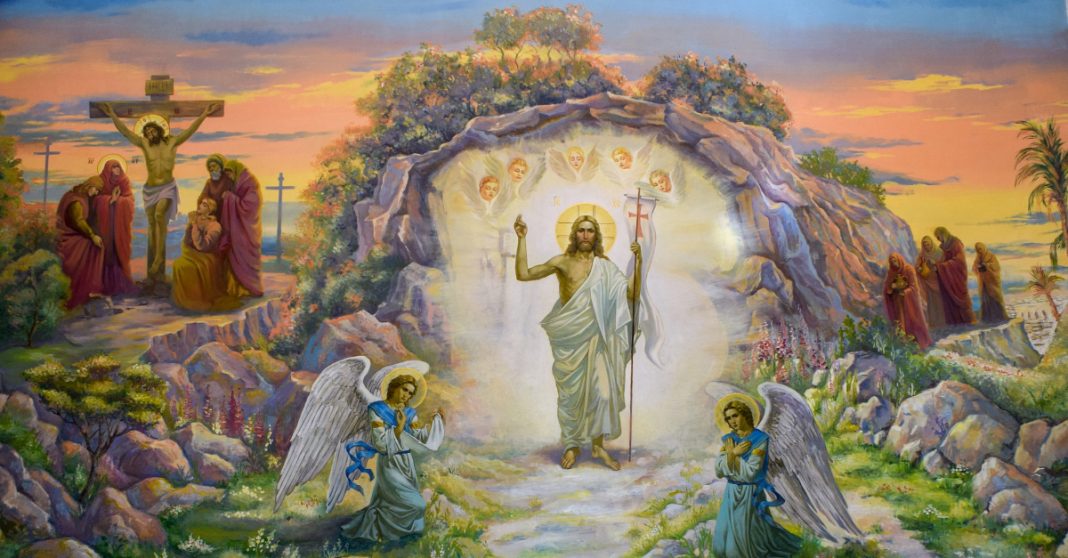Have you ever wondered about the cornerstone of Christianity – the resurrection of Jesus? This event, described in the Bible, has captivated and challenged people for centuries. Was it a real historical event, or something else entirely?
This article dives deep into the mystery, exploring the historical context of Jesus’ life and crucifixion, a brutal Roman punishment. We’ll then examine the discovery of the empty tomb, a pivotal event that ignited questions and sparked hope.
But the story doesn’t end there. The New Testament details encounters between the risen Jesus and his disciples. Were these physical experiences, or something more spiritual? We’ll explore the psychological and social factors at play, along with the transformative impact these encounters had on the early Christian movement.
The concept of Jesus’ resurrection goes beyond the physical. Theological interpretations delve into the significance of a transformed, spiritual body, offering hope and a foundation for Christian faith. We’ll explore how the resurrection signifies Jesus’ victory over death, providing solace and the possibility of eternal life.
This isn’t just a story of faith, though. The question of the resurrection is a topic of ongoing debate and scholarly exploration. We’ll look at the perspectives of both Christian scholars and historical skeptics, examining the evidence and considering alternative explanations.
Ultimately, the answer to the question of the resurrection of Jesus may lie within your own beliefs. This article equips you to explore the evidence, engage with diverse viewpoints, and form your own informed conclusion. So, is there truth to the empty tomb? Did Jesus truly rise from the dead? Join us on this captivating journey of discovery.
Crucifixion and Entombment: The Historical Context of the Resurrection of Jesus
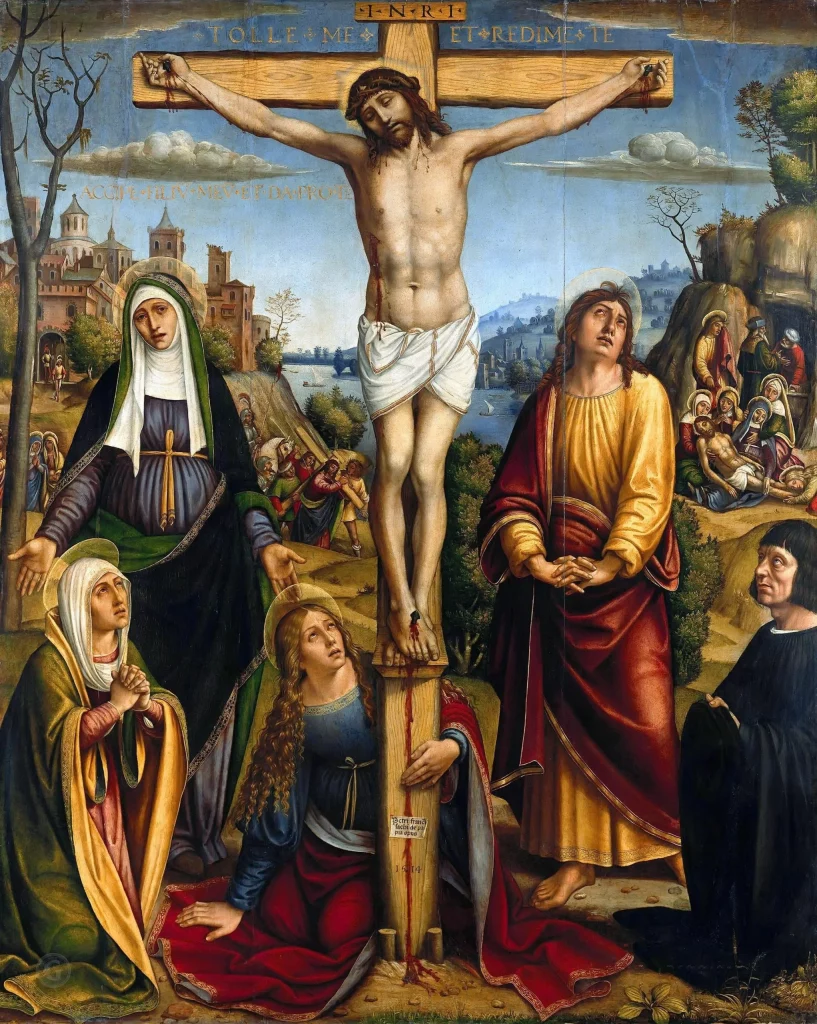
To understand the question of the resurrection of Jesus, we need to delve into the events leading up to it. Jesus of Nazareth emerged as a powerful and influential figure in Roman-occupied Judea around the turn of the first century CE. His teachings, emphasizing love, forgiveness, and the coming Kingdom of God, resonated deeply with many, but also challenged the established religious authorities. (Did the resurrection of Jesus really happen?)
This growing popularity, coupled with pronouncements about his own messianic role, ultimately led to conflict with the Roman governor, Pontius Pilate. Fearing a potential uprising, Pilate authorized Jesus’ arrest and execution by crucifixion, a horrific Roman punishment reserved for the most serious crimes.
Crucifixion was a slow and agonizing death. Victims were typically scourged, then forced to carry the heavy wooden crossbeam to the execution site. There, they were nailed (or tied) to the cross, left to hang in excruciating pain until they suffocated or died from exhaustion. (Did the resurrection of Jesus really happen?)
The details of Jesus’ crucifixion come primarily from the four canonical Gospels: Matthew, Mark, Luke, and John. While these texts are primarily theological documents, they offer valuable insights into the historical events surrounding his death and burial. All four Gospels depict Jesus being condemned by Pilate, crucified on a Friday, and entombed in a tomb belonging to a wealthy Joseph of Arimathea. (Did the resurrection of Jesus really happen?)
It’s important to consider that these accounts were written decades after Jesus’ death, and some variations exist between them. However, the core details of the crucifixion and entombment are consistent across the Gospels, suggesting a reliable historical foundation.
Furthermore, there’s some corroborating evidence from non-Christian sources. The Roman historian Tacitus briefly mentions the execution of “Christus” under Pilate. While lacking detail, it suggests the crucifixion was a known event within the Roman world.
Understanding the historical context of Jesus’ life, teachings, and the brutality of Roman crucifixion allows us to delve deeper into the following sections. We’ll explore the discovery of the empty tomb and the subsequent claims of the resurrection of Jesus, a central mystery that continues to spark debate and intrigue.
The Empty Tomb: A Central Mystery
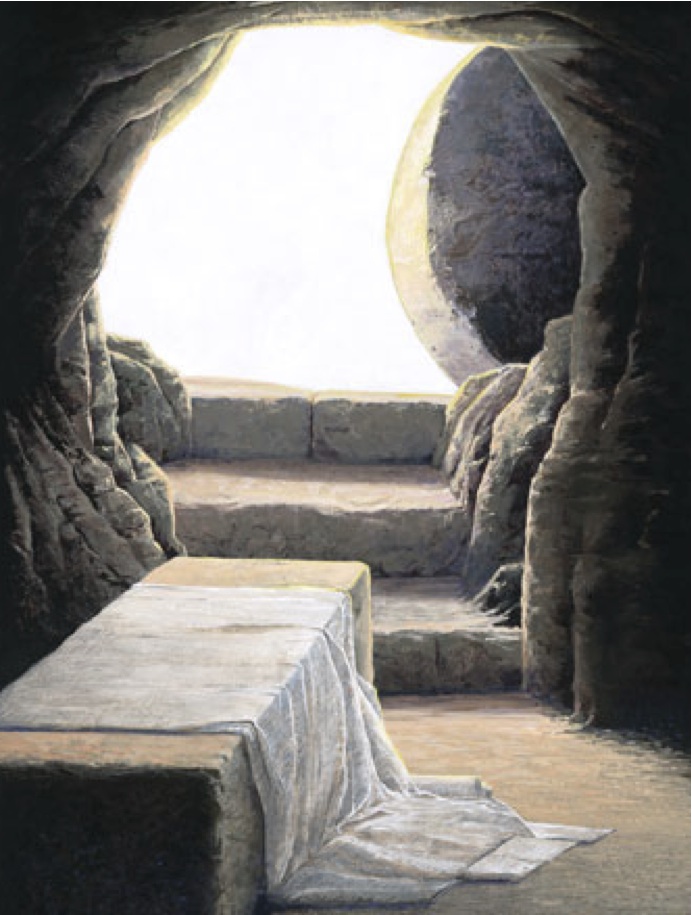
The discovery of the empty tomb on the third day after Jesus’ crucifixion is a pivotal event in the story of Christianity. According to all four canonical Gospels, a group of Jesus’ female followers, including Mary Magdalene and Mary the mother of James, arrived at the tomb early on the first day of the week (what we now call Sunday) to anoint his body with burial spices. (Did the resurrection of Jesus really happen?) However, to their shock and astonishment, they found the tomb open and Jesus’ body gone.
The empty tomb holds immense significance for Christians. It stands as the first physical evidence that something extraordinary had occurred. If Jesus’ body remained in the tomb, it would have been a clear sign that he was dead and remained dead. The empty tomb, however, suggests something else entirely. For Christians, it signifies the core tenet of their faith: the resurrection of Jesus from the dead. (Did the resurrection of Jesus really happen?)
The empty tomb isn’t just a historical curiosity; it’s a cornerstone of Christian hope. If Jesus conquered death, then death doesn’t have the final word. This belief offers solace and comfort to Christians facing their own mortality and the loss of loved ones. The resurrection signifies the possibility of eternal life and reunion with God. (Did the resurrection of Jesus really happen?)
Naturally, the empty tomb has sparked debate and alternative explanations. Some have suggested that Jesus’ body was stolen by his disciples. However, this theory seems unlikely. The disciples were a demoralized and frightened group after Jesus’ crucifixion. The idea of them boldly stealing a body from a Roman-guarded tomb, especially given the severe penalties for such an act, seems improbable.
Another explanation proposes that Jesus never actually died on the cross but somehow survived the ordeal and later escaped the tomb. However, the brutality of Roman crucifixion makes this scenario highly improbable. Furthermore, the Gospels depict Jesus clearly dead, having suffered a spear wound to his side. (Did the resurrection of Jesus really happen?)
The question of the empty tomb remains a central mystery in the story of Jesus. Was it truly evidence of his resurrection, or is there another explanation? We’ll explore these questions further as we delve into the experiences of those who claimed to have seen the risen Jesus in the following sections.
Appearances of the Risen Christ: Experiential Evidence
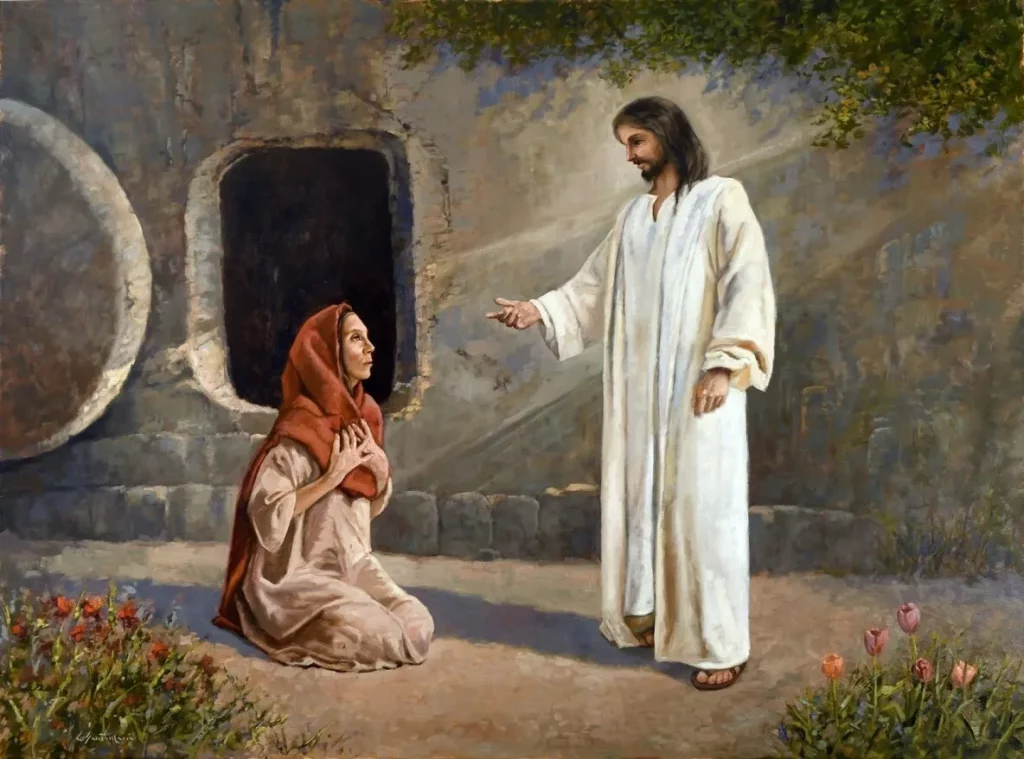
The empty tomb is just one piece of the puzzle surrounding the resurrection of Jesus. The New Testament goes a step further, detailing encounters between the risen Jesus and his disciples. (Did the resurrection of Jesus really happen?) These appearances are central to the faith of early Christians, but they also raise questions about the nature of these experiences.
The Gospels describe Jesus appearing to various individuals and groups in the days and weeks following his crucifixion. Mary Magdalene is often depicted as the first witness, encountering Jesus at the tomb itself. Other appearances include encounters with the disciples on the road to Emmaus, a gathering with all the disciples except Thomas (who later has his own encounter), and an appearance by the Sea of Galilee. (Did the resurrection of Jesus really happen?)
It’s important to consider the psychological and social context surrounding these experiences. The disciples were undoubtedly grieving and deeply shaken by Jesus’ death. They may have been primed for visions or hallucinations as they grappled with their loss. However, the sheer number of reported appearances, to individuals and groups alike, suggests a more complex phenomenon.
Furthermore, the Gospel accounts depict a clear transformation in the disciples after these encounters. From a fearful and despondent group, they become bold and enthusiastic proclaimers of the good news of Jesus’ resurrection. This newfound conviction and willingness to spread the message even in the face of persecution is a significant historical development. (Did the resurrection of Jesus really happen?)
It’s difficult to say definitively what the nature of these appearances was. Were they physical encounters with a resurrected Jesus, or spiritual experiences that transcended the physical realm? Theological interpretations vary, but the transformative impact on the early Christian movement is undeniable.
The experiences of the disciples became a cornerstone of early Christian belief. They provided a powerful message of hope and a foundation for the spread of Christianity throughout the Roman world. Whether seen as literal or metaphorical, these appearances fueled the conviction that Jesus had conquered death and offered new life to those who believed in him. (Did the resurrection of Jesus really happen?)
In the next section, we’ll explore the theological interpretations of the resurrection and how it continues to shape Christian faith today.
Theological Interpretations: Beyond the Physical
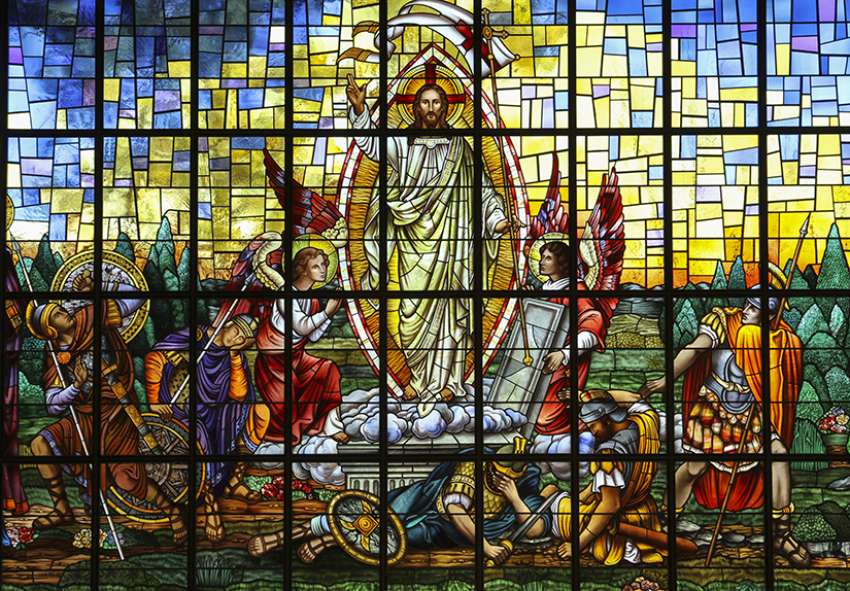
The concept of the resurrection of Jesus goes beyond a simple reanimation of his physical body. Christian theologians have grappled with the nature of this event for centuries, offering various interpretations that delve deeper into its spiritual significance. (Did the resurrection of Jesus really happen?)
One prominent interpretation emphasizes a transformed, spiritual body for the resurrected Jesus. This body is not bound by the limitations of the physical world. The Gospel of John depicts Jesus appearing in locked rooms, suggesting he wasn’t restricted by physical barriers. This transformed body signifies a new reality – one that transcends death and points towards the ultimate transformation promised to believers. (Did the resurrection of Jesus really happen?)
The resurrection also holds immense significance for Christian hope and salvation. If Jesus conquered death, then death doesn’t have the final say. This offers profound comfort to Christians facing their own mortality and the loss of loved ones. The resurrection signifies the possibility of eternal life and reunion with God in a transformed state, similar to Jesus’ own resurrected body. (Did the resurrection of Jesus really happen?)
Another theological concept linked to the resurrection is salvation. Christians believe that Jesus’ death on the cross was a sacrifice to atone for humanity’s sins. His resurrection signifies the triumph over sin and death, offering believers the possibility of forgiveness and reconciliation with God. This concept provides a foundation for Christian ethics and a life transformed by faith. (Did the resurrection of Jesus really happen?)
It’s important to note that these are just some of the many theological interpretations of the resurrection of Jesus. Different Christian denominations may have varying nuances in their understanding. However, the core message remains consistent – the resurrection signifies Jesus’ victory over death, offering hope, salvation, and a transformed future for those who believe in him.
Enduring Debate and Ongoing Scholarship
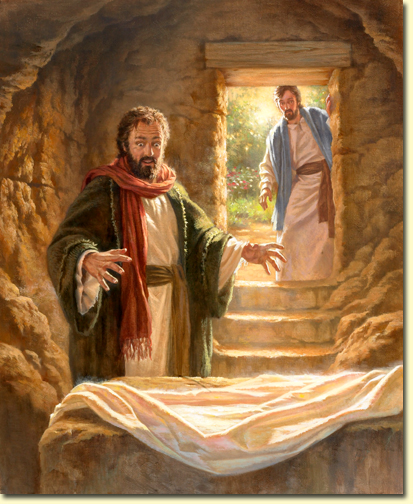
The question of the resurrection of Jesus remains a topic of ongoing debate and scholarly exploration. (Did the resurrection of Jesus really happen?) While the empty tomb and the disciples’ experiences are central to Christian belief, the historical reality of these events continues to be scrutinized.
Christian scholars generally view the resurrection as a core tenet of their faith, supported by the scriptural accounts and the transformative impact on the early Christian movement. They argue that the empty tomb, the multiple witness testimonies, and the sudden boldness of the disciples in the face of persecution are strong evidence for a real event that transcended human understanding. (Did the resurrection of Jesus really happen?)
Historical skeptics, on the other hand, offer alternative explanations for the empty tomb and the disciples’ experiences. They may point to the psychological state of the disciples following Jesus’ death, suggesting their grief and emotional turmoil could have led to visions or hallucinations. Others propose explanations like the possibility of the body being stolen or misplaced.
Ultimately, the question of the resurrection of Jesus may not have a definitive historical answer. The evidence is open to interpretation, and faith plays a significant role in how individuals approach this question. (Did the resurrection of Jesus really happen?)
However, this doesn’t negate the importance of exploring the evidence and considering the various perspectives. Whether viewed through a lens of faith or historical inquiry, the resurrection of Jesus is a foundational concept in Christianity and a significant event in human history.
Further Exploration:
This article has merely scratched the surface of a complex and fascinating topic. If you’d like to delve deeper, here are some suggestions for further exploration:
- Read the Gospel accounts of the crucifixion and resurrection.
- Explore the writings of Christian theologians who have grappled with the concept of the resurrection.
- Consider the perspectives of historical skeptics who offer alternative explanations.
By engaging with these diverse viewpoints, you can form your own informed conclusion about the resurrection of Jesus. (Did the resurrection of Jesus really happen?) This enduring question continues to spark discussion, inspire faith, and challenge our understanding of life, death, and the possibility of something beyond.
Frequently Asked Questions (FAQs)
1. What is the historical context surrounding Jesus’ crucifixion?
Jesus emerged as a prominent figure in Roman-occupied Judea, and his teachings challenged the authorities. His growing popularity led to conflict with Pontius Pilate, who ultimately authorized his crucifixion, a brutal Roman punishment.
2. What is the significance of the empty tomb?
The discovery of the empty tomb is a pivotal event for Christians. It suggests that Jesus’ body was not stolen or simply abandoned, and it fuels the belief in his resurrection.
3. How do Christians explain the appearances of the risen Jesus?
There are various interpretations. Some believe Jesus’ resurrected body was transformed and not bound by physical limitations. Others emphasize the spiritual nature of these experiences.
4. What is the theological meaning of the resurrection?
The resurrection signifies Jesus’ victory over death, offering hope, salvation, and the possibility of eternal life for believers.
5. Are there alternative explanations for the resurrection?
Historical skeptics suggest explanations like the disciples’ emotional state leading to hallucinations or the possibility of the body being moved. Ultimately, the question is open to interpretation.
Have you ever questioned the very foundations of your beliefs? In our last article, we tackled the head-scratching question: Did the Resurrection of Jesus Really Happen? Now, we delve even deeper into the supernatural. Aliens in the Bible: The Truth Behind Heavenly Explained explores the possibility that biblical encounters with “heavenly beings” weren’t divine visitations, but something far more extraterrestrial. Buckle up, as we analyze scripture through a new lens, questioning what we thought we knew about the divine – and perhaps, uncovering a truth that’s truly out of this world.


